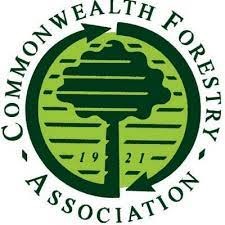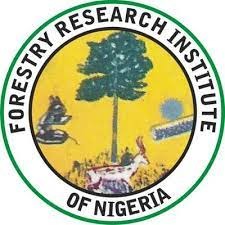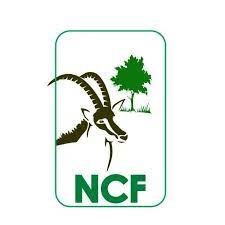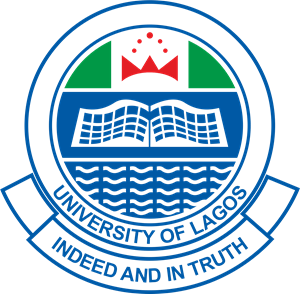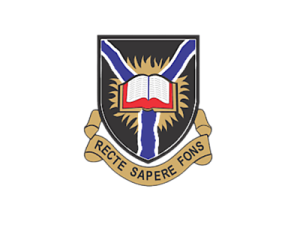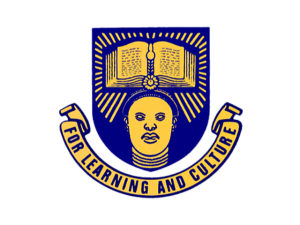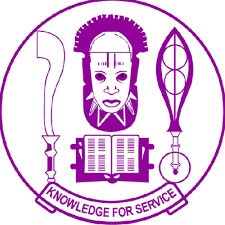
About Us
History of the Nigerian Field Society.
Based on ‘A Brief History of NFS.
By Joyce Lowe
Our Birth
by Joyce Lowe
The Nigerian Field 66:147-163 (2001)
The Society was conceived by Frank Bridges, a Government Administrative Officer in Eastern Nigeria, who, with the help of other colonial officials, launched The Nigerian Field Journal. During its 71-year history, the Nigerian Field Society has suffered ups and downs in its fortunes. After initial faltering steps, the Society began to thrive, until the intervention of the Second World War caused a drastic fall in membership and interrupted publication of the journal. Activities of the Society resumed after the war, but in the 1960s, National Independence led to an exodus of colonial officials (who had hitherto formed the bulk of the membership). Serious difficulties arose in the early 1980s from Exchange Control regulations, which hindered the remittance of subscriptions from Nigeria to the UK, where the journal was printed. This caused journal production to be transferred to Nigeria, where it is produced to an excellent standard. Although economic recession caused another departure of expatriates in the 1980s and ‘90s, the Society and the Journal have survived: many people returning to the UK kept up their membership, and today a majority of the Society’s officials and contributors to the journal are Nigerians.
1. Beginnings
The Society’s origins are described at the beginning of the Minute Book, entitled “Early History” and signed “A.F.B. Bridges, 3 October 1930″:
The idea developed with the thought that one seldom saw articles in the London Field about Nigeria or West Africa and that we knew little of wild life out here and of conditions in other parts of Nigeria. In this way was born the idea of a Nigerian Field, and it was agreed by everyone to whom it was told that such a paper was much to be desired.I was at Onitsha then (1923) and got so far as enquiring the cost of printing. I then went to Agbani which made it almost impossible to get such a scheme started. This sojourning in the bush and jogging by friends continued until after my arrival in Enugu in August 1930, when a final jogging resulted in the preparation of [a] circular and its distribution to likely friends all over Nigeria. In Enugu itself a small meeting assembled on 3 October and the Nigerian Field Society was formed.
Mr Bridges’ editorial in the first issue of the Journal (1931) gave a similar account which was reprinted as the Editorial in Vol.66 part 1 (April 2001). Sport was a prominent feature in the early issues of the journal, with accounts of cricket matches between Northern and Southern Nigeria, or between Nigeria and the Gold Coast; and L.H. Saunders wrote frequent articles on gardening. Later on, however, the most usual topics were Fauna, Flora, History, Science and Arts & Crafts. Rosevear (1981) also described the beginnings of the Society:
“When in 1929 Frank [Bridges] wrote to Edwin Haig in Ikom, Edwin at once brought 1he letter to me to discuss. He, Olive [Mrs Haig] and I formed the lonely little trio that was Ikom government station and I was in the process of teaching him the art of butterfly collecting. We enthused greatly over Frank’s scheme; but I saw that it was absolutely essential to produce a first copy of a well-printed Nigerian Field which people could see was worth subscribing to.Fired with enthusiasm, I at once produced a number of possible articles (fourteen I believe!) in simple language, to encourage people to start on insects, or trees or photography. These articles, together with his own contributions, Edwin sent off to Frank. It seemed, however, strategically desirable to give the impression of a large body of contributors and so they all appeared under different pseudonyms [e.g.] Osmeterium, Dendrophilus, Dogberry, Auceps, Phoenix, Interested, Victoria.I also produced The Nigerian Field’s only crossword puzzle.”
In his autobiography, Bridges (1990) wrote:
“I had been collecting articles for the first issue of The Nigerian Field greatly assisted by friends..and presently it came from the printers, 500 copies, and I addressed the envelopes to the sixty or so members. Thereafter I left this to Michael Nwokwu, a local boy from Nibo, who worked for the Society until his death 14 years later [in 1945], a gentle, loyal and conscientious lad to whom the Society owed its continued existence during the Second War”. However Bridges’ efforts did not meet everywhere with approbation, and he wrote of his time at Ikot Ekpene in 1937: “The Resident [the most senior Administrative Officer in the area] took to ringing up the office at 8 a.m. to ascertain whether I had reached it and was under the impression that I spent all my time doing the work of the Nigerian Field Society”.
2. The Journal
Quoting Rosevear (1981): “Edwin [Haig]’s felicitous writing, wide interests and understanding, his dedication and his irresistible recruiting of support soon crystallised into a masterly editorship that set the Journal on a sound course. In those early days, branches were rare or non-existent; Fellows, as we elegantly designated ourselves, seldom came together in a body and the journal was the Society; everything depended upon its quality and a content which could..hold the interest of a varied readership.
At first, publication was irregular. The first eight issues were numbered 1-2 (1931), 3-5 (1932) and 6-8 (1933). In retrospect, numbers 1-5 were treated as Volume 1, and numbers 6-8 as Volume 2. (Volume numbers were in roman numerals until volume 41, but for convenience they are all given here in arabic notation). In 1934, the first issue was called Vol.3 No.1 and in the editorial it was “hoped that funds will permit the issue of four numbers”. The Editor continued: “Members can themselves help by bringing this journal to the notice of their friends. There is no wish to over-persuade,but the complaint is sometimes heard that people had `not been invited’ to join, or had never heard of the Society. As copies are regularly placed in the saloons of Messrs Elder Dempster’s mail vessels and have been sent to all clubs in the country, Messes of the R.W.A.F.F. [Royal West African Frontier Force], and even Heads of Government departments, it is felt that all that can reasonably be done from this office is being done in the way of legitimate advertisement.”
From 1934 to 1939 inclusive (Vols.3-8) four issues were produced each year; but with the outbreak of World War II, publication had to be curtailed and only the following were printed: 1940 (2 issues), 1941 (1 issue) and 1943 (1 issue). Even after the war, recovery took time and there were only two issues in 1947 and again in 1948. From 1949 to 1978 (Vols.14-43) there were again four issues per year, each issue usually 48 pages. Since Vol.42 (1977), the issues have been called “parts” rather than “numbers”, and Dr Halstead gave the journal a new look, using a white cover instead of the former yellow one, with a different illustration for each volume, and adding a sub-title,The International Field Studies Journal of West Africa (dropped in 1984). However, the articles continued much as before: a mixture of scholarly studies and readable reminiscences, perhaps with slightly more emphasis on geology, (Halstead’s speciality). Some long-standing members did not renew their subscriptions because they felt the content had become too “scientific”. Probably presentation rather than content was at fault and, in some articles, jargon was not sufficiently edited into plain English. Halstead introduced issues devoted to a particular topic, the first of which caused dissension (see 3. MONOGRAPHS). His inclusion of non-members of the Society on the Editorial Board also led to protests. From 1979, the parts were combined in various ways, publishing fewer than 4 issues per year, thus reducing the amounts spent on journal covers and postage.
In 1982, the Society went through another difficult period. Funds were low in the UK (where the journal was still being printed) and there was difficulty transferring money from Nigeria due to currency control regulations. Disagreements arose when the Editor printed Vol.47 part 4 (a “Wild Life Issue”) although the Executive Council had asked him to wait until funds were available. This issue was nearly three times the normal size, costing over £4,500, an amount which the Society did not have in the UK. Production in Nigeria (which had been discussed by the Executive Council as early as 1975) had now became both a virtue and a necessity, and should have begun in 1983 with Vol.48. However, 1983 passed without an issue being printed there, which resulted in some Branches withholding their subscriptions. To assist the new Editor with production of the journal, the Annual Business Meeting of February 1984 appointed a “task-force” comprising Dr P. Allsworth-Jones, Dr Joyce Lowe, Mr E.J. Pilcher, Mrs Chris Purisch and Dr S.K. Sanwo. Volumes 48 (1983) and 49 (1984) were published as single issues, but did not appear until 1984 and 1985 respectively. Another consequence was that, when Joyce Lowe became Editor, submission of articles was drying up, and colleagues and friends had to be asked to write papers, a situation reminiscent of the early years of the Society. From Vol.50 (1985) onwards, there have usually been two issues each year, designated Parts 1-2 and Parts 3-4 (with an extra issue in Vol.53, partly funded by the Federal School of Wildlife Management, New Bussa). Publication on time was resumed with Vol.51 (1986) and the number of pages per year was gradually increased from 96 (Vol.50) to 176 (Vol.55 onwards). A larger volume was produced in the year 2000, to mark the 70th Anniversary of the Society. With effect from Vol.66 (2001) the two issues are to be designated Part 1 and Part 2.
In the first issues printed in Nigeria, different people did the typing and “paste-up”, which meant that text and illustrations were not well integrated, and space was wasted. Beginning with Volume 50 parts 3-4, articles were prepared as camera-ready copy by the Editor, at first using an IBM “golfball” typewriter and, from Vol.53 part 4 onwards, a micro-computer which gave greater control over layout. Authors could also then submit articles on diskette. The present Editor is assisted in assembling the journal by Father Professor Joseph Kenny. The journal forms the main publicity for the Society, and though articles are produced to exacting professional standards, they must be presented attractively by the use of drawings and photographs, and in a form that is interesting and intelligible to a wide readership. The Field enjoys a high academic reputation and is taken by libraries in America, Britain and other European countries as well as Nigeria. The importance of prompt publication was underlined by the problems which arose when delays occurred – loss of members, and declining numbers of articles submitted. Moreover, the journal cements the Society together, as shown by the demise of branches which had broken away from the parent society and ceased to take the journal.
3. Monographs
The production of Monograph No.1 (1979) caused considerable controversy both within the Society and outside it. It was entitled International Palaeontological Expedition to Sokoto State, 1977-78. The expedition was led by the then Editor, the late L.B. Halstead. The expedition had suffered from various contretemps, including police detention and a car accident. Many members thought the Monograph ought to have been more circumspect. However, the affair eventually blew over, with a proviso that Council should approve future monographs before publication. However, the other two monographs were inoffensive: two autobiographical accounts, “In the Service of Nigeria” by A.F.B. Bridges (1980) and “A Geologist in Nigeria 1920-1940″ by A.D.N. Bain (1981). In effect, from 1979 to 1981, one of the normal issues was replaced by a monograph, which was separately paged. This could be confusing if the volumes were bound. There have been no more monographs, although some issues have been devoted to a single topic.
4. Printers
Only a few firms have been employed to print the journal. The original printers were H.F.& G. Witherby, High Holborn, London. It was explained by Rosevear (1981) that Godfrey Allen (who took over from Edwin Haig as Assistant District Officer in Ikom) knew Colonel Witherby, who was a keen ornithologist. The latter agreed to produce The Nigerian Field to a high standard but at a rock-bottom price. Rosevear writes, “I think we had to find £50 to cover the first number, [which] represented what most of us would have drawn as a month’s salary.” This printer was used until Vol.14 part 2 (1949) when a change was made “for reasons of economy” to Arthurs Press, Stroud. The Society continued with them until Vol.47 parts 1-3 (1982), apart from a trial printing of one issue (Vol.46 part 3) at Ibadan in 1981 by Tony Designs. Due to the bankruptcy of Arthurs Press, the last issue that Dr Halstead edited (Vol.47 part 4) was completed by Lawrence Allen Ltd., Weston-super-Mare. Since 1983, the journal has been printed by INTEC Printers Ltd., Ibadan. An exception was Vol.51 parts 3-4 (1986) which was printed by Duplitype, Leicester, making use of funds in the UK, where printing costs were then less than in Nigeria. However, since the introduction of the Structural Adjustment Programme for the Nigerian economy in 1987, printing has become significantly cheaper in Nigeria. Moreover, INTEC give a reliable service, and have been found to be both co-operative and capable of good work including colour plates.
5. Indexing
It was stated in Vol.29 No.4 (1964) that Mrs Margaret Sykes was making an index to The Nigerian Field. In 1966, volunteers were requested to help and nine sections were planned: for authors, named persons & ethnic groups, mammals, birds, other animals, plants, places, illustrations, and other topics. By 1976, indexes for Vols. 1-30 had been compiled and cyclostyled by Ibadan members on mammals, birds and plants; members in the UK were engaged on other sections. The report of an Executive Council meeting in September 1980 stated that Mrs Mary Caswell was to collate the index, and those working on it were asked to contact her. It was never published, but the UK Branch re-activated the project in 1987, extending it to cover Vols. 1-50 (1931-1985). A professional indexer (Dr Joan Daniels) was employed, with an editorial panel consisting of Mr Patrick Jaekel, Mrs June Hopkins and Mrs Mary Caswell. Funding came from the Society and the UK Branch, with donations from President and Mrs Ibrahim Babangida, Mrs Hopkins and the A.G. Leventis Foundation. This Index, published in 1989, contains 285 pages, and is still available. Under Halstead’s editorship, indexes were also produced volume by volume up to Vol.47. Subsequently, Joyce Lowe prepared indexes for Vols.48-51 (1986), Vols. 52-53 (1989), and thereafter every two years.
6. Christmas cards and notelets
Coloured plates from the journal were often reproduced as Christmas cards. This did not always go smoothly – some sent to Nigeria in bulk failed to arrive – and the profit was small. However, the cards helped to publicise the Society.
Notelets, using black-and-white drawings, were produced in 1989 and, in 1994, coloured greetings cards were printed, using the attractive paintings of Nigerian fruits by Mrs Joan Bacon. Individual Branches have also sometimes printed cards.
7. Essay competitions
The Society held Essay Competitions in 1955, 1956 and 1957. The first prize was £5. Later, at various times, several branches (Ibadan, Kano, Lagos) held competitions and the winning essay was often published in the journal. In the 1980s, the number of schools became too large for a volunteer organiser to handle even if limited to one State. However, since 1989, the Nigerian Conservation Foundation has organised Art and Essay Competitions on a country-wide basis through State Ministries of Education. Sponsors, such as oil companies, donate prizes and money to convey winners to Lagos for the prize-giving. The Nigerian Field Society gives book prizes for the Essay Competition, using the interest on the sum of £2,000 which was donated by Frank Bridges. The winners are also given copies of The Nigerian Field. Some schools take the journal, though in present circumstances few can afford even this modest luxury.
8. The Society’s Officials
The “Enugu Capital Committee” (1930/31) was composed of Captain P.R. Foulkes Roberts (M.C.), H. Trattles, J.N. Panes and Major F. Chadwick (DSO, MC). Mr Trattles and Mr Panes, together with J.G.C. Allen and J.M.B. Homfrey, formed a Committee to draft the Rules. Frank Bridges was Secretary and Treasurer and, at first, Editor as well!
Secretary: For a brief period around 1948-50, Dr P.J.L. Roche was Secretary, but apart from this, Mr Bridges continued until 1956, when Sir Hugo Marshall was elected and served until 1972. Mr R.E. Sharland filled the post until 1980, when Frank Bridges resumed until 1983. After administration of the Society returned to Nigeria, Mrs Hazel Fell and Mrs Barbara Stone completed two years each, followed by Mrs K.G. Okpako (1987-88) and Dr P.Allsworth-Jones (1989-91). From 1991-97 the Secretary was Eng. O.V. Osula, succeeded by Dr Dele Layiwola (1997-2000) and by Father Professor J. Kenny in 2001.
Treasurer: Mr Bridges was the first Treasurer of the Society, and served until 1954, except for short periods during 1939-40 and 1945-47 (Mr C.P. Thompson) and 1947-49 (Dr P.J.L. Roche). Mr T.F. Davey was Treasurer from 1954 until 1957, when Mr J. Brayne-Baker was elected. He retired in 1969, to be succeeded by Mr P.C. Randell, until 1972. Mr F.A. Goodliffe took over until his death in 1979, and was followed by Mr K. Nicklin (1979), Dr D.R. Goddard (1980) and Mr H. Caswell (1981-82). After the Society came back to Nigeria in 1983, Mr H.J. Cox served for one year, then Mr E.J. Pilcher (two years) and Mr M. Robb (one year). From 1987 to 1994, Mr P.V. Hartley was the Treasurer, followed by Chief R.F. Carrington from 1994-97, and Dr Modupe Ladipo from 1997 to date.
Editor: For the first few years, Mr Bridges was Editor, helped by four Associate Editors: Mr E.F.G. Haig (Entomology & Ornithology), Mr D.R. Rosevear (Botany & Photography), Mr L.H. Saunders (Gardening), and Mr J.S. Ross. Early in 1934, Mr Haig became the Editor, and continued with short breaks) for 42 years! In 1943, the so-called “war issue” (Vol.11) was edited by W.S. Stanley Merrett. In 1945, Haig resumed editing and produced Vol.12 onwards, despite being at Baghdad (Ministry of Economics) in the early 1950s. He finally resigned in 1976, when he was 80. Tributes to Haig appeared in Vol.41, pages 146-149 (1976). When Dr L.B. Halstead took over, he instituted a number of changes (see 2.JOURNAL, 3.MONOGRAPHS). In 1983, production of the journal was transferred to Nigeria, and Mr J.A. Mackenzie became Editor, having shown that the journal could be printed in Nigeria by producing one issue in 1981. Dr Joyce Lowe was elected at the 1985 Annual Business Meeting, and continued until her retirement from Nigeria in 1994. She was succeeded by Dr Pat Oyelola, who still holds the position. President: There was no position of President until 1947 when, at a meeting in lbadan (31/3/47), Mr Bridges was elected. He continued as President until his death, on 6th January 1994. Professor D.T. Okpako was elected in 1995, and was succeeded in 2000 by Engineer N.O. Oyelola. Vice-President(s): Mr D.R. Rosevear was elected Vice-President at the meeting in Ibadan on 31/3/47, and served until 1976. In that year, Mr P.A. Bello and Chief A.M. Oseni were elected, joined in 1977 by Prof. J.H. Elgood who served for 10 years. Mr Bello stepped down in 1989, and was replaced by Dr P.A. Anadu until 1993. Dr R.W.J. Keay was elected in 1988, and served until his death in April 1998. Chief Oseni died in 1991 and was replaced by Professor D.T. Okpako. Engineer N.O. Oyelola was elected in 1995 and Professor E.J. Alagoa in 1996. Currently, the three Vice-Presidents are Mr P. Tuley (elected in 1999) together with Dr Lucas Ojo and Mr Wil van Trier (both elected in 2001).
Society Officials in the UK: When the administration moved to Nigeria in 1983, Mr H. Caswell looked after the Society’s funds in the UK, followed by Mrs Hazel Fell in 1985 and Joyce Lowe in 1994, with assistance from Mr R.E. Sharland. The Distribution Secretary was Miss Eunice Tattersall from 1985 to 1994, when she handed over to Joyce Lowe.
Presentations to Officials by the Society: All positions are honorary, and only expenses are claimed, but several presentations have been made to long-serving officers.
On 3 October 1951, an inscribed silver tray was presented to Mr Bridges to mark the 21st Anniversary of the Society; reported in Niger. Fld 17: 14-18 (1952), with a photograph of the tray.
On 5 May 1959, at the Annual Meeting of the UK Branch, Mr Haig was presented with a silver salver, for “his first 25 years” as Editor. (He went on to do another 17 years.) With the balance of the money he bought a bicycle, a cake mixer for his wife, and a water pump.
On 3 September 1977, at the Annual Gathering of the UK Branch, Mr Haig was presented with a silver cup, in appreciation of his services. On 30 August 1980, Mr Bridges received a silver-plated tray to mark the 50th Anniversary of the Society. In 1993, he gave this to the Society in Nigeria, and it is now in the care of the President there.
9. The Society’s Committees
The Executive Council: By 1949 both Bridges and Haig had returned to the UK, and in 1950 a Provisional Council was formed, consisting of the Society’s officials plus members resident in West Africa. In 1953, for example, besides the triumvirate of Bridges, Haig and Rosevear, the following were members of the Executive Council: A.B. Cozens (Eastern Provinces, Nigeria), F.J. Harper (Western Provinces, Nigeria), R.L.B. Maiden (Northern Provinces, Nigeria), Dr P.J.L. Roche (Lagos, Nigeria) M.D. Irving Gass and A.C. Russell (Gold Coast, now Ghana), T.S. Jones (Sierra Leone), S. Milburn (United Kingdom). The Council did not meet physically, but decisions were arrived at by correspondence. The President made proposals by circulating a cyclostyled questionnaire to members of the Council, who voted for or against or stated their reservations. In this way, the Rules were modified, and other decisions made. From time to time, it was suggested that the Society’s name should be changed to “The West African Field Society” but this was not accepted.
In 1956, when Sir Hugo Marshall became Secretary on his retirement from Nigeria, the Executive Council (ExCo) met in his house near Bath, England. Henceforth ExCo consisted of Society officials only (President, Vice-President(s), Secretary, Treasurer and Editor).
The Resident Committee: In 1963, the idea of joint secretaries in the UK and in Nigeria was mooted (Vol.28, No.3). In 1966, the journal listed the Resident Committee in Nigeria: Dr Brian Hopkins (Chairman), Mr P.A. Bello (Treasurer) and Mr C.H. Fry (Secretary). In 1968, Mr R.H. Kemp was Secretary, followed by Mr J.F. Redhead in 1971. In 1976, the Committee was Chief A.M. Oseni (Chairman), Mrs J.F. Maddison (Secretary) Mr Bello (Vice-Chairman) and Mr C. Shokpeka (Treasurer). The latter was succeeded as Treasurer by Mr A.A. Sijuade (1978) and Mr D.M. Ward (1982-83). In 1980, Mr T.R. Mills was Secretary, then Mr P. Alexander-Marrack (1980-81) and Mr D.R. Bostock (1982-83).
The Resident Committee met with Branch officials in 1966 (Lagos) and 1967 (Kaduna). The April 1967 journal stated that the papers of the Secretary, C.H. Fry, had been destroyed in a fire at Ahmadu Bello University, Zaria. No further meetings were held until the Committee was revived in 1976 (Ibadan). Thereafter, it met 13 times (twice a year), the venues usually alternating between northern and southern Nigeria. The early files were lost when the Maddisons’ car was stolen from the Central Hotel in Kano, complete with “crook-lock”. When administration of the Society returned to Nigeria in 1983, the functions of the Resident Committee were subsumed by Annual Business Meetings.
Annual Business Meetings: The Society’s officials are elected at these meetings. They were mostly held in November or December, until (in 1996) it was decided that it was better to finalise the year’s accounts and meet in the early part of the following year. Meetings have been hosted by different branches in turn, as follows: Ibadan (1984 for 1983), Kano (1984), Kaduna (1985), Lagos (1986), lbadan (1987), Kano (1988), Ile-Ife (1989), Lagos (1990), Port Harcourt (1991), Ibadan (1992), Calabar (1993), Ile-Ife (1994), Kano (1995), Lagos (1997), Ibadan (1998), Oshogbo (1999), Abeokuta (2000), Ibadan (2001). In recent years, owing to economic hardship and frequent petrol shortages, travelling has not been easy, and it has become unusual for more than four or five branches to be represented at meetings. Branches unable to attend are informed of decisions by circulating the Minutes.
10. Rules
Rules were published in the first issue of the journal in 1931, and were revised and expanded from time to time. In April 1952, an 8-page booklet of rules was distributed. They were amended in the journals of 1958 and 1967, and revised rules were published in 1972. Subsequent versions of the rules have appeared in Vol.49, 127-130 (1984) and Vol.61, 82-88 (1996). The latest set of rules were adopted at the Annual Business Meeting in Lagos on 22 February 1997 (see Vol.62, 83-88).
11. Membership
The register of members gives 32 names dating from 1930, the year of the Society’s foundation. These are:- J.G.C. Allen, A.F.B. Bridges, R.W. Browne, Major F. Chadwick, G.B.G. Chapman, S.H. Clark, H. Creighton, Rev. Fr. V. Davey, Capt. G.F. Davies, Rev. F.W. Dodds, J. Durst, Capt. P.R. Foulkes-Roberts, E.F.G. Haig, Dr G.H. Henry, J.M.B. Homfrey, Hope Waddell Institute, R. Lessells, M.S. Lewis, Miss M. Macdonald, E.S. Moore, R.E.S. Morgan, M.J.T. Nicholson, J.N. Panes, H.K. Robinson, D.R. Rosevear, C.E. Ross, Capt. H.B. Shepheard, B.G. Stone, H. Trattles, J.D. Weir, T.B. Welch and J.E.H. White. Their professions were various:Administration 11, Church 3, Education 4, Forestry 1, Medical 1, Posts & Telegraphs 4, Prisons 1, Railways 5, Trade 2. The first issue of the journal, dated July 1931, lists 61 members, plus 14 wives, and the Principal of Hope Waddell Institute, Calabar.
According to the Rules printed in the first issue, “The first two hundred and fifty members shall be designated Foundation Members…” but this number was not attained until 1932. Membership rose every year, reaching about 700 in 1939. During World War II, few journals were produced (see 2.JOURNAL) and by 1946, there were only 265 members. In subsequent years, numbers increased, standing at 1,048 in 1952 and 1,290 in 1963. It has become difficult to keep track of members by name, as in Nigeria they may be ephemeral and Branches often send `x’ subscriptions rather than naming individual members. In 1994, there were about 500 members in Nigeria and about 250 outside. The number of copies posted from the UK (to non-Nigerian addresses) has fallen from 255 (1995) to 225 (2001), representing a net loss in this period of 13 Life Members, 12 Ordinary Members and 5 Corporate Members. New members are recruited in the UK, but are insufficient to compensate for the losses. In addition to the copies supplied to subscribers in the year of publication, others are sold later as back numbers.
The character of the Society membership has changed with the passage of years. Until 1950 it was composed largely of officials of the British Colonial Service, mainly in Nigeria but also in other West African territories. These were joined, in the 1950s and 1960s, by expatriate teaching staff of the newly opened universities in Nigeria. Members from other occupations were few, and Nigerians even fewer, despite attempts to encourage their participation. The exodus of the British, following national independence in 1960, represented a real threat to the survival of the Society. However, continued support in Britain by former members helped, and in the 1970s and 1980s, expatriate staff of commercial firms started to become interested. By the 1990s, economic depression had caused further departure of expatriates; but Nigerians had now begun to join in substantial numbers, and to contribute a good proportion of articles to the journal. This is linked to expansion of higher education in Nigeria, to growth of interest in conservation, and to the relatively low cost of membership in Nigeria, where the fall in value of the Naira has made overseas journals scarcely affordable.The Nigerian Field is one of the few scholarly journals to appear regularly in Nigeria.
12. Subscriptions
At first, there was an entry fee of £1 (waived for “Foundation Members”) and an annual subscription of £1. Life Membership was £12. The Enugu Committee resolved on 20th October 1933 that “payment of Entrance Fees shall be suspended during the present financial stringency”. In 1936, three types of members were proposed: Fellows £1, Members 10 shillings and Associates 5 shillings. The last was an attempt to attract Nigerian members (not being available to Europeans) but did not have the desired result. In 1947, it was decided that everyone should pay £1 per annum and this became 30 shillings [£1.50] in 1958, though there was a reducing scale for payment in advance. In 1963, Life Membership was set at £20 but anyone who had been a member for 30 years was declared a Life Member. From 1973, the annual fee was £2, rising to £4 in 1976. In 1980 it became £8, and in 1987 £10, where it remains today. Life Membership was discontinued in 1977, due to the effects of inflation. In Nigeria, the subscription was N7 in 1976, N12 in 1983, N15 in 1985, N25 in 1991, N50 in 1994, N150 in 1996 and N300 in 2000. In fact, these rates do not cover printing costs, and are only possible because a substantial part of income still comes from sterling payments. From 1976, the corporate subscription (for libraries) was set higher than the individual rate, and is currently £20 or N2000.
Although the subsidy of subscriptions in Nigeria may have helped to encourage Nigerian membership, it may not be wise to allow the Nigerian subscription to fall much below the bare printing cost of the two yearly issues. Membership in the UK had been kept up by expatriates retiring from Nigeria, but these are becoming fewer. Efforts should be made to expand membership and, as Halstead pointed out, personal contact is better than circulars for this purpose.
13. Finances
The first statement of accounts published in the journal gives receipts as £63.5s.0d, and payments as £2.7s.7d, leaving a balance of £60.17s.5d, causing one to wonder how the printing was paid for! Accounts have been published in the journal for 1932-79 in £ sterling, and from 1983 onwards in Naira.
Until 1969, income was generally above expenditure and the reserves of the Society gradually built up to £2,793. In the 1970s, expenditure usually exceeded income (being especially high in 1971 due to printing a Special Issue for the Society’s 40th Anniversary) eating up the reserves and eventually causing a deficit. From 1976 to 1979, expenditure continued to rise (linked with high inflation in the UK) and income fell, largely because of difficulty transferring subscriptions from Nigeria due to Exchange Control Regulations. The 1981 journal contained a slip saying that only two issues could be produced that year in the UK, but one would be printed in Nigeria (this was Vol.46 part 3). At the end of 1982 there was a £500 overdraft, and Bridges lent the Society £600. No Accounts appear in the Journal for 1980, 1981 or 1982.
In recent years, high inflation has caused steep rises in Naira costs of printing – although in sterling terms it remains cheaper than printing in the UK. Increased postal charges, both in Nigeria and the UK, have added to the Society’s expenses.
14. Financial assistance
In 1936, the Government gave a grant of £50 p.a. for two years. In 1983, the Federal Department of Forestry assisted with N2,500 for the printing of Vol.47, part 4, a Wild Life Issue, in return for receiving 500 copies. In 1985, Kainji Lake Research Institute paid N2,841 towards another Wild Life Issue (Vol.50 parts 1-2) of which they were given 50 copies. In 1988, the School of Wildlife Management, New Bussa, gave N2,915 towards the printing of Vol.53, part 4, to mark their 10th Anniversary, and 500 extra copies were printed for them. Several donations helped to produce and print the Index to Volumes 1-50 (1989), (see 5.INDEXING).
15. Branches
Lectures and excursions are the usual Branch activities, with occasional larger organised events. Haig (1952) writes that Ibadan Branch was begun by himself and Rosevear in 1936. On 7/6/37, seven members met in Lagos, and on 11/8/37 eight members met in Enugu, but activities were not recorded; also on 11/8/37, twenty-nine members met in Ibadan, with Mr J.R. Ainslie as Acting Chairman and Mr Haig as Secretary, others present being Mr & Mrs F.S. Collier, Mr & Mrs G.N. Herington, Mr A.F.A. Lamb and Major & Mrs L.R.C. Sumner. In September 1937, Ibadan members visited Olokemeji, and in January 1938 went to Iseyin (lunch at the Manor House) and climbed Ado Rock, with a dip in the pool on the top – excursions which have remained popular. Lectures were given, in the Officers’ Mess or members’ houses. In Ibadan, flower shows were held at Mapo Hall in 1938 and 1939, attended by 756 and 600 people, with profits of £16.16s and £5.9s.9«d respectively. (See Vol.62, p.56 for an account of the 1938 show.) Major Sumner provided the Flower Show with a cup, later used for the Garden Competition, and still in the possession of the Branch. It was recorded that Ibadan Recreation Club also presented a cup, but its whereabouts are unknown.
It seems that Branch meetings lapsed during World War II, but were revived in 1947. Lagos Branch met on 14/5/47 with 15 members, including W.E.S. Merrett, P.J.L. Roche and H.J. Savory. In July, 18 members were present, and in November 45 members. An Ibadan meeting in May 1947 had 28 people, including P.A. Allison, F.S. Collier, E.F.G. Haig, G.N. Herington, R.W.J. Keay, P.C. Randell and H. Vine. Subsequently, the Branch met monthly, with about 60 members. In 1949, Lagos Branch had 88 members at one meeting, and Ibadan Branch had monthly lectures during 1950. The next Branch to be formed was Umuahia in 1951, with A.B. Cozens and R.H. Stone as moving spirits. (They also wrote a well-known Biology text book). In 1952 Accra, Enugu and Jos were added, and by 1955 Benin, Kano, Kumba and Onitsha had started, followed by Zaria in 1956, and Buea in 1958. In 1966, Kaduna was formed, and Ile-Ife and Maiduguri in 1972. However, not all the Branches existed continuously, and some old ones disappeared while new ones were added. In 1958, the number of Branches was 12, but throughout the 1960s it varied between 7 and 10. In 1973, Zaria broke away as the “Zaria Field Society”, as did Jos in 1982 as the “Plateau Field Society”, but these attempts at independence proved short-lived. In 1982, Calabar, Port Harcourt and Sokoto began, and in the following year Enugu/Nsukka and Sapele, bringing the total to 15. Since then, a few Branches have become moribund; in 1994, the nominal total was 13 of which 10 subscribed to the journal (Abuja, Bauchi, Calabar, Ibadan, Ile-Ife, Kaduna, Kano, Lagos, Port Harcourt, UK) but only 6 or 7 sent reports of activities.
In recent years, the following have been added: Anwai/Asaba (1995), Abeokuta (1997), Oshogbo (1998), Benin (revived 2001) and Bida/Niger (2001). The continued existence of a Branch is very dependent on the dynamism of its officials, especially the secretary, to organise meetings and expand membership.
For members in the UK, an Annual Dinner (evening) was held in London from 1957 to 1968, changing to a lunch at a place of interest from 1969-1976. These were mostly held in May, but in 1974 the date was moved to September to enable members on leave from Nigerian universities to attend. From 1977, there was a lecture meeting in the spring, and an Annual Gathering in September. Since 1987, there have been three meetings a year, the first of which is the A.G.M., with occasional Symposiums (sometimes jointly with another Society such as the World Wide Fund for Nature). Meetings are held in different parts of the country and well attended by 30-60 members.
16. Conclusion
In 1976, Halstead wrote to the Resident Committee, “Until a band of dedicated Nigerians appears, as we believe it will, we have a duty to them as well as to our predecessors to ensure that the Journal and the Society flourish in the interim”. As he foresaw, this change has been taking place, and Nigerians now take responsibility for running the Society and its branches, with some financial support coming from overseas members.
Today the role of the Field Society becomes especially important. Nigeria’s population has grown from under 20 millions in 1930 when the Society started, to about 100 millions today, which has caused destruction of wildlife and natural vegetation over large parts of the country, and degraded the environment to an extent that increasingly threatens future supplies of food and water. People are realising the importance of conservation. The well-being of the Society, and prompt publication of the journal (with its unique blend of scholarship and general appeal) continue to depend on the energy and dedication of its officials. However, it is not easy in the present economic situation of Nigeria, to find people able to devote time freely to the Society, but one can only hope that this will continue to be possible. The assistance voluntarily given by individuals helps to keep costs down, and to make the Society and the journal available to a wider audience.
17. References
Bridges A.F.B. 1990. So we used to do. Pentland Press, Edinburgh.
Haig E.F.G. 1952. Jottings on a Nigerian career [on A.F.B. Bridges]. Niger. Fld 17: 6-14. Rosevear D.R. 1981. The Start. Niger. Fld 46: 1-2.
Information may also be found in obituaries of officials:
A.F.B. Bridges, born 23 January 1895, died 6 January 1994. See Niger. Fld 59: 88, 169-171 (1994).
F.A. Goodliffe, born October 1905, died 8 February 1979. See Niger. Fld 44: 48 (1979).
E.F.G. Haig, born 1896, died 4 June 1983. See Niger. Fld 47: 138 (1983); 48: 22-3 (1983).
L.B. Halstead, born 13 June 1933, died 30 April 1991, in a car accident. See Niger. Fld 56: 89 (Editorial, 1991); Niger. Fld 59: 104 (1994).
H.F. Marshall (Sir Hugo), born 1905, died June 1986. See Niger. Fld 52: 2 (1987).
W.E.S. Merrett, born 1904, died 29 Apri1 1982. See Niger. Fld 47: 135 136 (1982).
A.M. Oseni, born 3 June 1927, died 7 September 1991. See Niger. Fld 57: 4-7 (1992).
P.C. Randell, born 4 Febuary 1910, died 1992. See Niger. Fld 59: 2 (1994).
D.R. Rosevear, born 28 November 1900, died 17 January 1986. See Niger. Fld 50: 51-52 (dated 1985, but published in 1986).
L.H. Saunders, born 1897, died in the Gambia, 21 November 1943 of black water fever. See Niger. Fld 13: 2, 30 (1948).
Notes – which were p.1 footnotes in the original publication:
Joyce Lowe was a member of the Society from 1959, Enugu Branch Secretary 1961-2, member of Ibadan Branch Committee 1970-85 and its secretary 1977-80, member of the Editorial Board 1983-94 and Editor 1985-94: Council Member resident in UK and Distribution Secretary from 1994
The Minute Book was recently restored and bound with the help of a donation from the UK Branch; see D.P. Anosike, Vol64, 29-30 (1999), and D.T. Okpako Vol 65,p.11 (2000)
Our Patners

